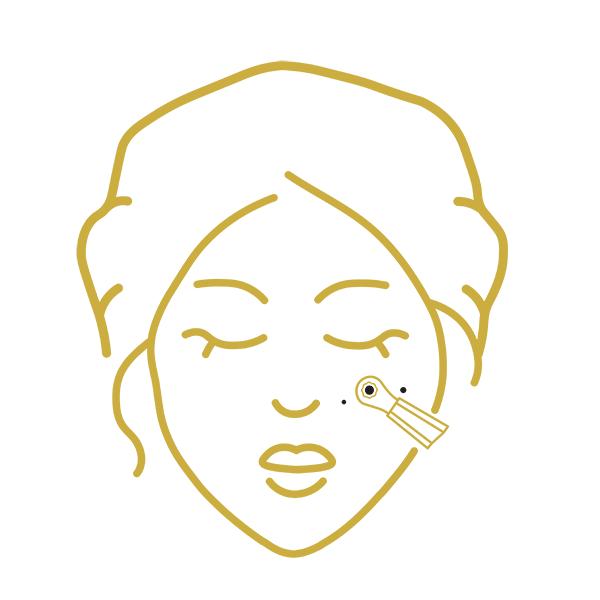

A small, fleshy bump on the skin or mucous membrane caused by human papillomavirus. Warts are caused by various strains of human papillomaviruses. Different strains may cause warts in different parts of the body. Warts can be spread from one location on the body to another or from person to person by contact with the wart. The main symptom is a fleshy, painless growth on the skin. Common areas affected include the hands, feet, and genitals. Most warts go away on their own within months or years. Warts can grow anywhere on the body, and there are different kinds. For example, common warts grow most often on the hands, but they can grow anywhere.
FREEZING TREATMENT :
Concentrated cold air (a mixture of dimethyl ether and propane) is sprayed onto your wart. This kills the skin and allows you to scrape away the surface of the wart. These treatments are a good choice if you want to try to remove a wart quickly, but they aren’t strong enough to remove all warts.
CRYOTHERAPY :
Cryotherapy is another process where doctors use liquid nitrogen. It is applied with the help of a cotton swab to the areas where warts are present, in some cases it can be applied to the neighbouring areas as well. It leads to the formation of blisters that fade away with time.
Surgery is usually only considered if a wart hasn’t responded to other treatments. Your doctor can cut away your wart with a surgical knife or burn it with electricity. You’ll need to receive a shot of anesthetic first, and these shots can be painful. Surgery may also cause scarring.
Everything you need to feel healthy and beautiful
Yes, but a common mole rarely turns into melanoma, which is the most serious type of skin cancer. Although common moles are not cancerous, people who have more than 50 common moles have an increased chance of developing melanoma.
Both cancerous and non cancerous moles can be removed through surgical and non surgical processes.
Surgically removing a mole, either for cosmetic reasons or because the mole is cancerous, will result in a scar. However, the resulting scar may all but disappear on its own depending on such factors as: your age. the type of surgery.
There are four basic types of mole removal: excision, shave removal, laser removal, and freezing.
A number of websites offer “do-it-yourself” tips for removing a mole at home. These methods aren’t proven to work, and some may be dangerous. You should talk to your doctor about your options before you try any home remedies for mole removal.
Some of these unproven methods include: burning the mole off with apple cider vinegar, taping garlic to the mole to break it down from the inside, applying iodine to the mole to kill the cells inside, cutting off the mole with scissors or a razor blade.
Warts are caused by an infection with the human papilloma virus (HPV). The virus causes an excess amount of keratin, a hard protein, to develop in the top skin layer (epidermis). The extra keratin produces the rough, hard texture of a wart.
Stronger peeling medicine (salicylic acid), Freezing (cryotherapy), Other acids, Minor surgery, Laser treatment.
Approximately 23% of warts regress spontaneously within 2 months, 30% within 3 months and 65% to 78% within 2 years. Previously infected patients have a higher risk for development of new warts than those never infected.
Home treatment is often effective in removing common warts. Unless you have an impaired immune system or diabetes, try these methods: Peeling medicine (salicylic acid). Nonprescription wart removal products such as salicylic acid are available as a patch, ointment, pad and liquid.
To help prevent warts from spreading to other parts of your body: Don't scratch or pick at your warts. Keep your warts dry. Try to avoid your warts while shaving.
To help prevent person-to-person spread: Clean your hands regularly, Disinfect cuts and keep them clean and dry, Don't touch other people's warts.
Copyright © 2023 SAPPHIRE Cosmetic Medical Wellness (Private) Limited. All rights reserved.